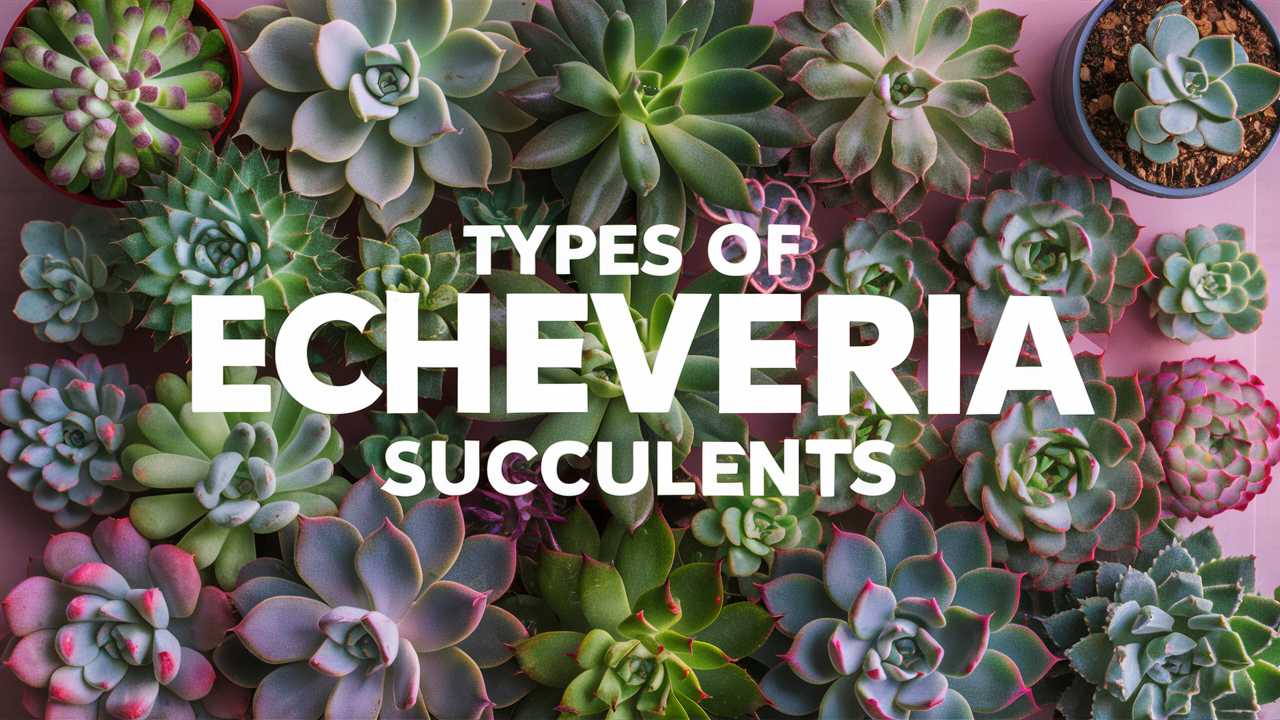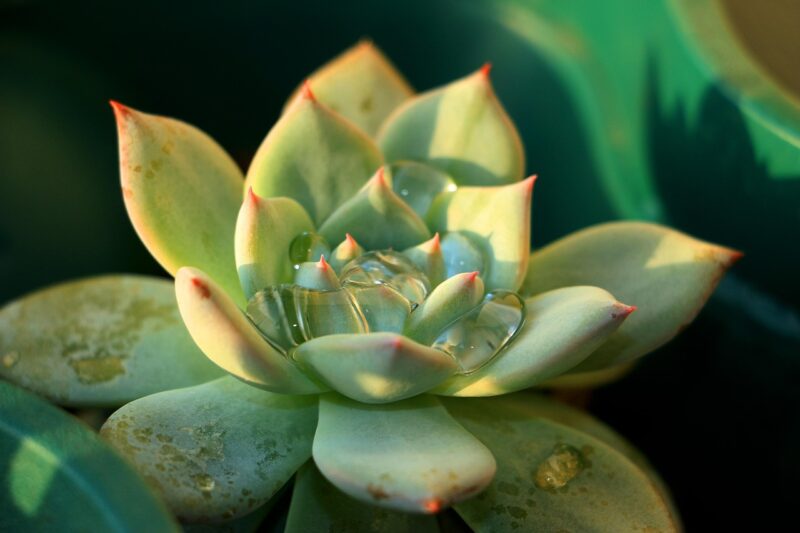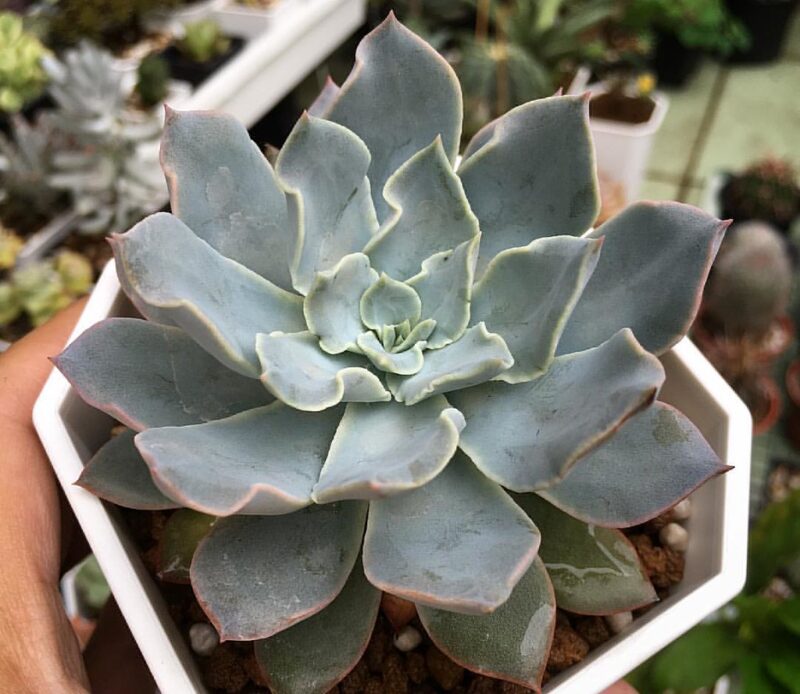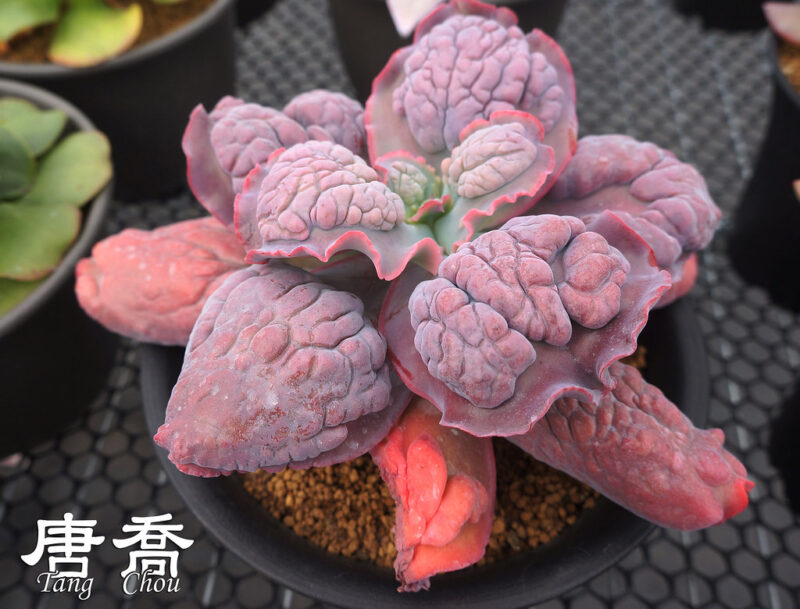Learn about the fascinating world of Echeveria, exploring a variety of species that reflect the beauty and diversity of these captivating plants. Each section will focus on a specific type, elucidating their characteristics, care requirements, and unique attributes.
Echeveria Elegans
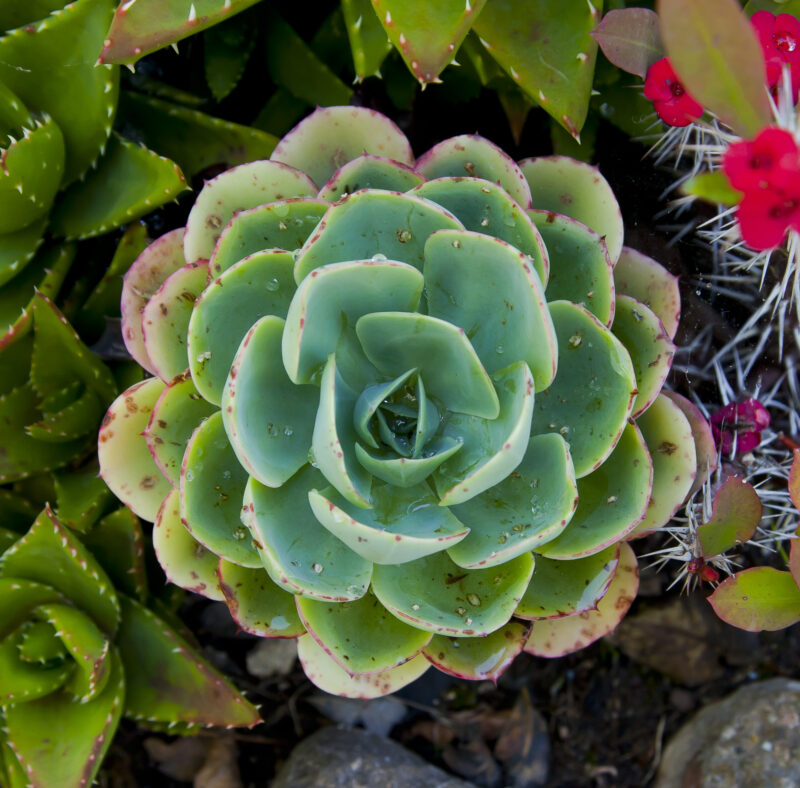
Known colloquially as the “Mexican Snowball,” Echeveria elegans is one of the most popular Echeveria species. This succulent is characterized by its compact rosette shape, smooth blue-green leaves, and the delicate, frosty appearance that its namesake implies. Echeveria elegans can thrive in a variety of settings, making it a favorite for both beginners and seasoned plant caretakers.
Echeveria elegans requires plenty of sunlight, ideally around 6 hours a day for optimal growth. It thrives best in well-draining soil and can easily succumb to root rot if overwatered. A light watering regimen, coupled with letting the soil dry out completely between sessions, keeps this succulent happy. Additionally, its attractive foliage often produces vibrant pink or orange flowers that bloom in the spring and summer, adding an extra pop of color to its already stunning appearance.
Echeveria ‘Lola’
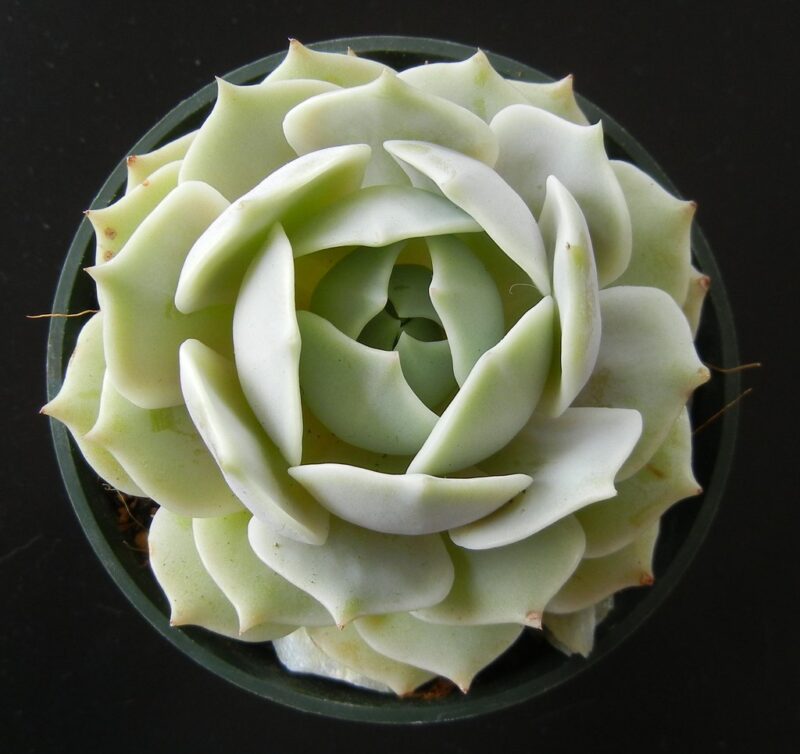
Echeveria ‘Lola’ is a hybrid that has gained popularity for its captivating color palette and lovely rosette structure. The leaves exhibit a pastel lavender hue, dusted with a subtle, waxy coating that enhances their ethereal charm. This succulent shines particularly in cooler light conditions, rendering it a perfect choice for indoor spaces with indirect light.
In terms of care, Echeveria ‘Lola’ prefers similar environments to other Echeveria varieties. It should be planted in well-draining soil and placed in a location that receives indirect sunlight. Watering should follow the “soak and dry” method, ensuring the soil dries out completely before the next watering. Regularly checking for pests is essential, as the thick leaves can attract mealybugs and aphids, which should be addressed promptly to maintain the plant’s health.
Echeveria Deranosa
Echeveria deranosa is a lesser-known yet striking Echeveria species that features elongated, fleshy leaves arranged in a compact rosette. It stands out due to its unique grayish-green foliage, often edged with rosy pink tips. Beyond its aesthetics, Echeveria deranosa produces beautiful, bell-shaped flowers in shades of bright coral, typically blooming in late spring to early summer.
Cultivating Echeveria deranosa is straightforward, as it shares many care requirements with its Echeveria relatives. It thrives in bright, indirect light and requires a fast-draining soil mix. Watering should be done infrequently, allowing the soil to dry out completely before rehydration. In summary, this succulent’s low-maintenance care combined with its distinct visual appeal makes it a great addition to any succulent collection.
Echeveria Agavoides (Molded Wax Agave)
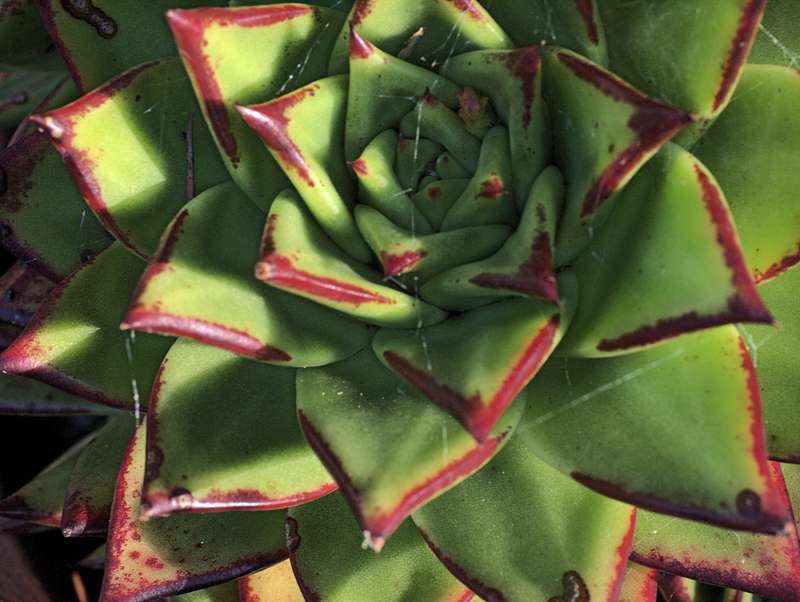
Echeveria agavoides, often referred to as the “Molded Wax Agave,” exhibits a robust and architectural form that is reminiscent of its namesake. Its wide, fleshy leaves have a striking triangular shape and come in shades of deep green with red margins. This plant is particularly admired for its dramatic rosette formation and hardiness, making it an ideal candidate for xeriscaping.
Echeveria agavoides thrives in bright, direct sunlight and requires well-draining soil. Its water needs are moderate; it’s best to allow the plant to dry out entirely before watering, as it can be sensitive to excessive moisture. Moreover, this species can withstand temperature fluctuations, making it suitable for outdoor cultivation in various climates. Echeveria agavoides not only garners attention for its unique form but also produces vibrant flowers on tall stalks that add even more height to its display.
Echeveria Colorata
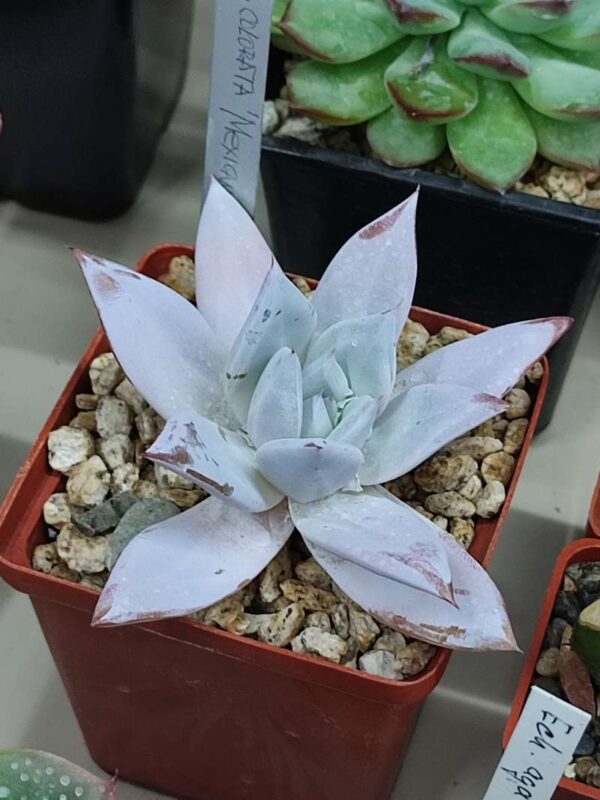
Echeveria colorata is a captivating succulent renowned for its bold coloration and rosette shape. The leaves exhibit a lovely gradient of colors, transitioning from green to shades of coral and plum, particularly when stressed by sunlight or drought. This color transformation makes Echeveria colorata a visual treat throughout the seasons.
In terms of care, this succulent flourishes in full sun and well-draining soil. It requires less frequent watering than other Echeverias—ideally, waiting until the soil is completely dry to provide hydration again. If grown in too much shade, the leaves may lose their vibrant colors, so it’s essential to strike the right balance of light exposure. Echeveria colorata can bloom beautifully, producing a tall inflorescence with radiant orange flowers that attract pollinators and enhance garden aesthetics.
Echeveria Galaxy Blue

As its name suggests, Echeveria ‘Galaxy Blue’ offers a celestial touch with its striking blue-gray leaves and compact growth habit. This hybrid is cherished for its lovely appearance and low maintenance. The leaves emerge in a perfect rosette, often blushed with hints of pink depending on environmental conditions.
Echeveria ‘Galaxy Blue’ thrives in well-draining soil and requires moderate watering. It prefers bright, indirect sunlight, as direct sun can lead to leaf burn. Adjusting watering frequency based on the season and environment is key; during the winter months, less frequent watering is necessary. Overall, the charm of Echeveria ‘Galaxy Blue’ makes it a popular choice for those wanting to infuse a bit of tranquility into their plant collection.
Echeveria Lilacina
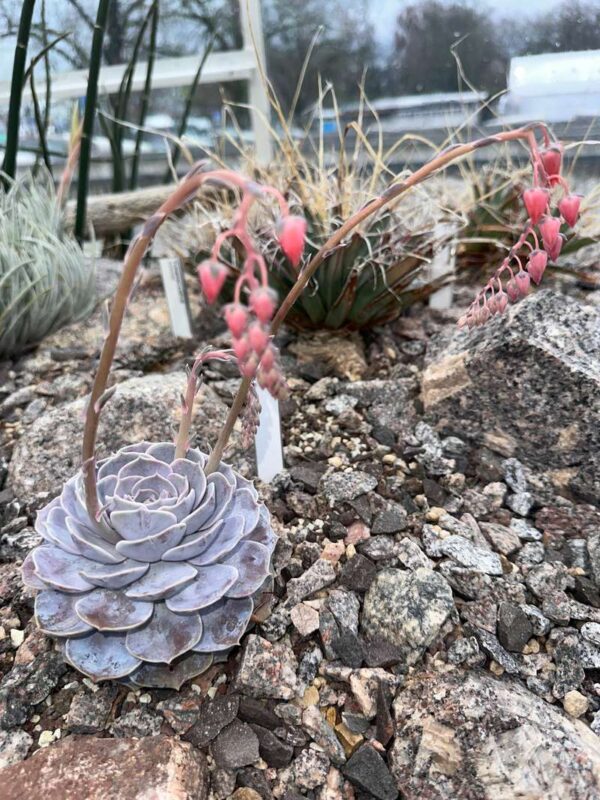
Echeveria lilacina, often called the “Wooden Rose,” is a striking succulent characterized by its soft, powdery leaves that exhibit a charming lilac or pale lavender shade. This Echeveria adds elegance to any personal collection and can be particularly stunning when grouped with other succulents for contrast.
Caring for Echeveria lilacina involves providing it with bright but filtered sunlight. It thrives in a well-draining potting mix to ensure its roots don’t sit in water. The watering schedule should follow the same soak-and-dry method; this minimizes the risk of rot. Notably, when exposed to varied temperatures or sunlight, the color intensity of its leaves can change, further enhancing its aesthetic appeal.
Echeveria Purpusorum
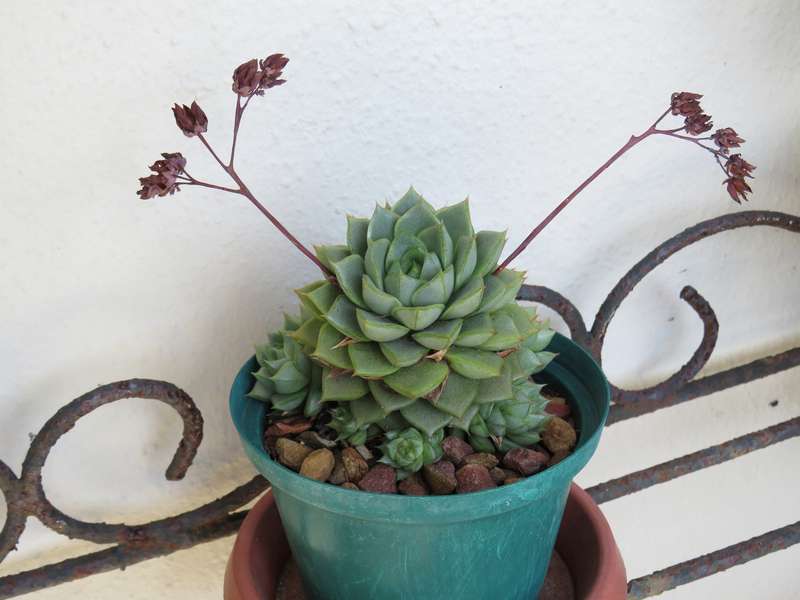
Distinct in its appearance, Echeveria purpusorum features spiky, pointed leaves that emerge in a compact formation. The leaves are often mottled with white and green, giving it a unique texture that distinguishes it from other species. This delightful plant stays relatively small and makes for an excellent specimen for small gardens or containers.
Echeveria purpusorum prefers bright, indirect light and needs well-draining soil to thrive. Allowing the soil to dry out completely between waterings is crucial, as it does not tolerate overwatering well. This species can produce striking coral flowers, typically blooming during the late spring and summer months. The elegant appearance and intriguing foliage make Echeveria purpusorum an excellent addition to any succulent lover’s collection.
Echeveria Peacockii
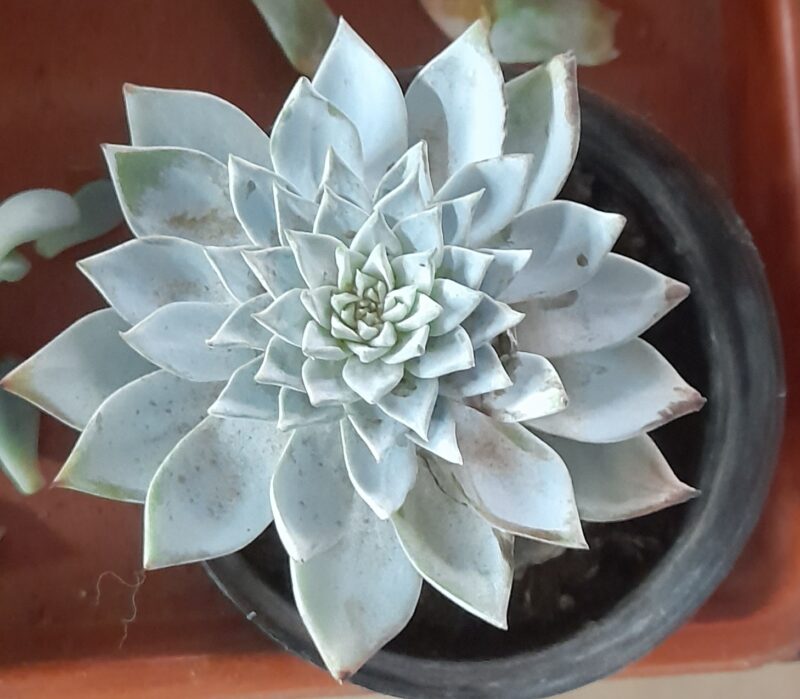
Known colloquially as the “Peacock Echeveria,” Echeveria peacockii showcases an array of colors reminiscent of a peacock’s feathers, with stunning shades of green, blue, pink, and purple. This Echeveria species develops a wide rosette and has strongly cupped leaves that curl slightly at the edges, adding to its visual interest.
Echeveria peacockii thrives in bright sunlight and requires a sandy, well-draining soil mix. Its watering needs mirror other Echeverias, meaning it should be allowed to dry out completely between waterings. This succulent is relatively low-maintenance and can withstand varying temperatures, making it a solid choice for different climates. Echeveria peacockii also boasts vibrant flowers that sprout in the summer, boasting bright coral and yellow hues.
Echeveria Secunda
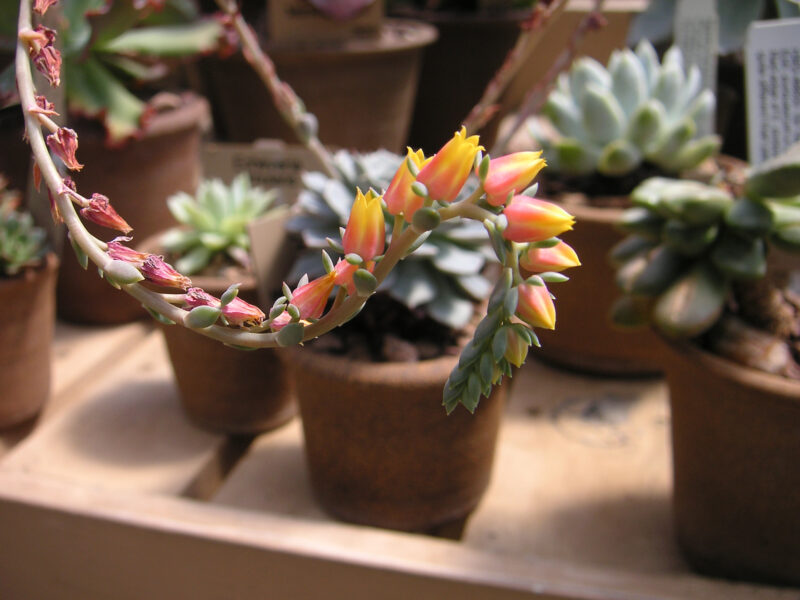
Echeveria secunda, widely recognized for its adaptability, features tight rosettes with fleshy, upright leaves. The leaves are often a vibrant green but can take on beautiful hues when exposed to more sunlight. Echeveria secunda is particularly noted for its resilience and makes an excellent choice for those new to succulent care.
This Echeveria thrives in bright, direct sunlight and prefers well-draining soil. Watering should be limited; it’s ideal to wait until the soil is completely dry before providing moisture again. One of the delightful aspects of Echeveria secunda is its ability to produce charming flower spikes adorned with soft pink blooms, typically appearing in summer. Their vibrant looks coupled with ease of care make them popular in gardens and landscape design.
Echeveria Setosa (Mexican Firecracker)
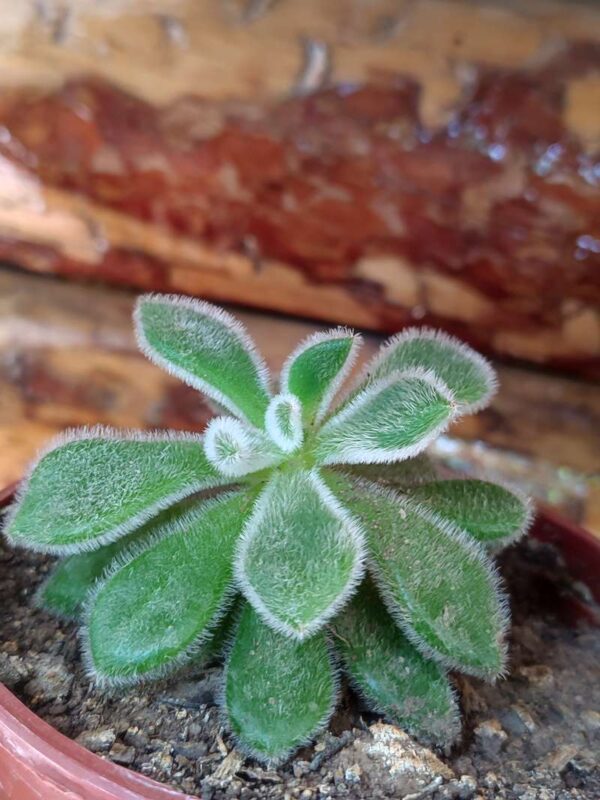
Echeveria setosa, commonly known as the “Mexican Firecracker,” is a stand-out species appreciated for its fuzzy, soft leaves. The leaves exhibit distinctive sides and are adorned with fluffy white hairs, giving it a textural advantage that entices many succulent collectors.
This type of Echeveria prefers bright sunlight and can thrive in slightly shadier spots without losing coloration. It requires the same care typical of other Echeveria species, including well-draining soil and careful watering practices. Echeveria setosa also produces an eye-catching flowering spike adorned with bright red to orange tubular flowers, attracting hummingbirds and pollinators. Its unique appearance and ability to draw from nature make it an intriguing succulent.
Echeveria Runyonii ‘Topsy Turvy’
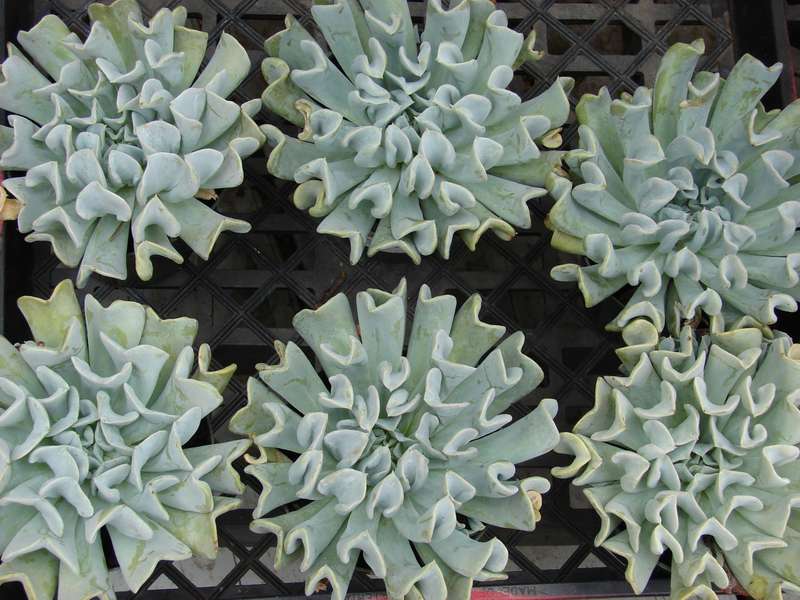
A fun and quirky variety in the Echeveria family, Echeveria runyonii ‘Topsy Turvy’ features leaves that curl and twist in unusual directions, giving it a whimsical appearance. The pale green leaves are often tinted with pink, adding to its charm. This Echeveria is perfect for those looking to add an unexpected element to their succulent collections.
Echeveria runyonii thrives in bright, indirect light and prefers sandy, well-draining soil. As with its counterparts, it’s crucial to allow the soil to dry out completely between waterings. This species is relatively low-maintenance and can produce delightful clusters of tubular flowers in bright shades of orange or red, typically blooming in the warmer months. Its audacious appearance sets it apart from more traditional succulents, making it a conversation starter in any collection.
Echeveria Cubic Frost
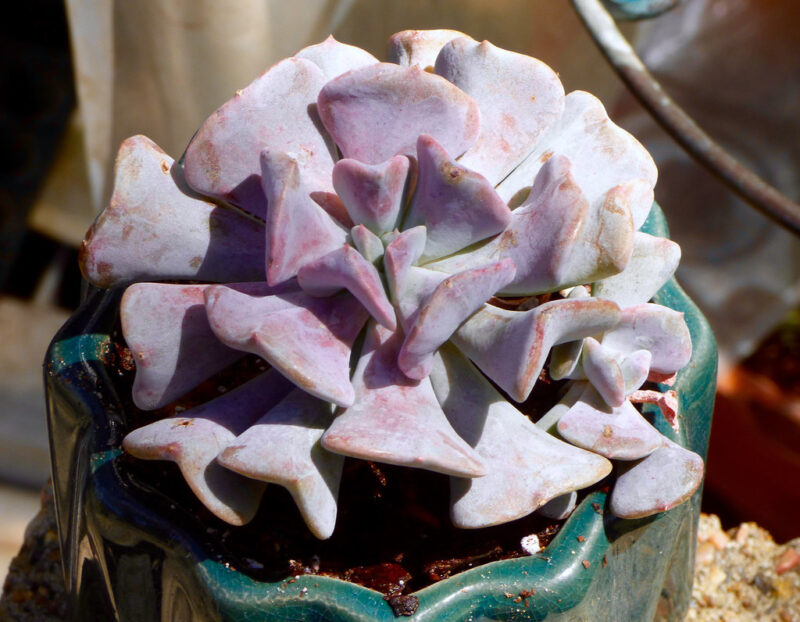
Echeveria ‘Cubic Frost’ is a unique hybrid that stands out due to its geometric shapes and frosty appearance. The leaves are thick and tightly arranged, often appearing in different shades of blue and gray. This cultivar is particularly appealing for enthusiasts who appreciate modern, artistic arrangements in their succulent displays.
This Echeveria does well in full to partial sunlight and thrives in well-draining soil. It shares similar watering routines with other Echeveria varieties, requiring infrequent watering and complete drying of the soil between sessions. Aside from being visually striking, Echeveria ‘Cubic Frost’ can produce lovely pink flowers that add a splash of color during its blooming season, often attracting pollinators.
Echeveria Joy’s Giant
Known as Echeveria Joy’s Giant, this impressive cultivar is notable for its enormous and robust rosette formation. Its leaves are thick, fleshy, and often take on delightful shades of blue-green with a waxy texture. This gives the plant a vibrant, visually engaging presence in any setting.
Caring for Echeveria Joy’s Giant is manageable, as it thrives in bright, indirect sunlight and well-draining soil. A careful watering strategy, favoring the soak-and-dry method, will keep this giant happy. It’s also worth noting that this succulent can produce stunning flower stalks showcasing vibrant orange or pink blooms that tower above its impressive rosette. This cultivar blends elegance with easy care, appealing to a wide variety of succulent enthusiasts.
Echeveria ‘Bumps’
Echeveria ‘Bumps’ is remarkable for its distinctive leaf texture, featuring raised bumps along the leaf surfaces that create a fascinating tactile experience. The leaves tend to take on shades of green, often changing to more vibrant hues when stressed. Its unique appearance adds an intriguing element to any succulent collection.
This Echeveria thrives in bright sunlight and prefers a well-draining soil mix. Regular watering should follow the guideline that the soil is completely dry before hydrating again. Echeveria ‘Bumps’ can produce lovely inflorescences adorned with tubular flowers, often in coral or pink hues, flowering in the warmer months. Its unique texture and easy care make it a favorite among collectors looking for something distinctive.
Echeveria ‘Gorgon’s Grotto’
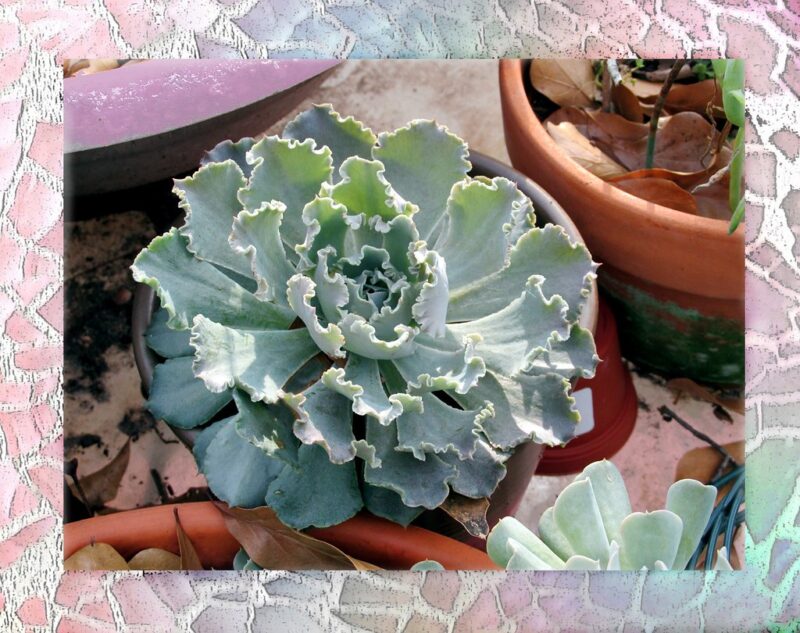
A visually striking addition to any collection, Echeveria ‘Gorgon’s Grotto’ boasts thick, slug-like leaves that spiral in an imaginative formation. This hybrid is particularly favored for the rugged appearance of its foliage, which showcases deep green hues often edged in pink. Its unusual form brings an element of mystery to succulent gardens.
Echeveria ‘Gorgon’s Grotto’ appreciates bright, filtered light and well-draining soil. Its watering requirements align with other Echeveria, relying on the plant’s ability to withstand dry spells while avoiding soggy roots. During its blooming phase, it can produce vibrant flower spikes showcasing captivating yellow or orange blooms—a perfect complement to its mysterious, tactile foliage.
Echeveria ‘Lipstick’
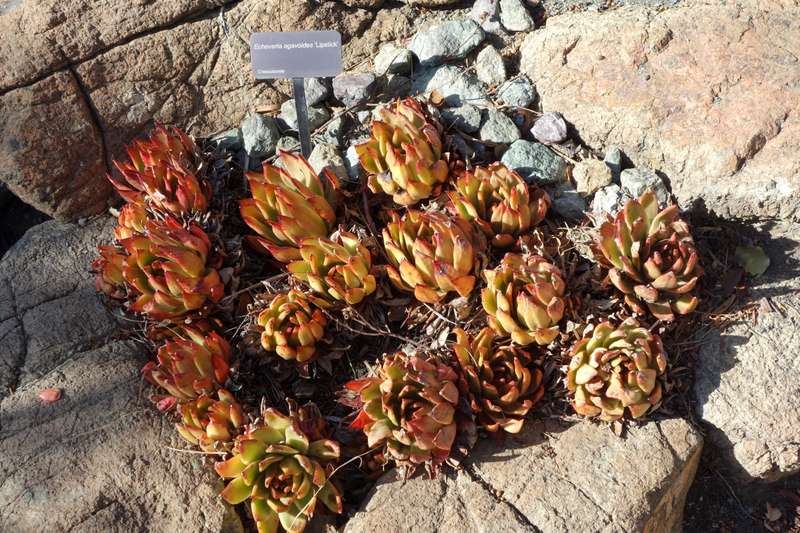
If you’re after vibrant colors, Echeveria ‘Lipstick’ won’t disappoint. Known for its bright red tips that highlight the otherwise green leaves, this succulent brings a punchy aesthetic to any arrangement. Its unique look makes it a popular choice among succulent lovers who appreciate bold visuals.
This Echeveria thrives in full sun and requires a well-draining soil mix to support its growth. Consistent watering practices, ensuring the plant doesn’t sit in excess moisture, are essential for maintaining its health. The striking bloom stalks that emerge in the summer often feature bright pink flowers, adding to the charm of this visually captivating succulent.
Echeveria Affinis
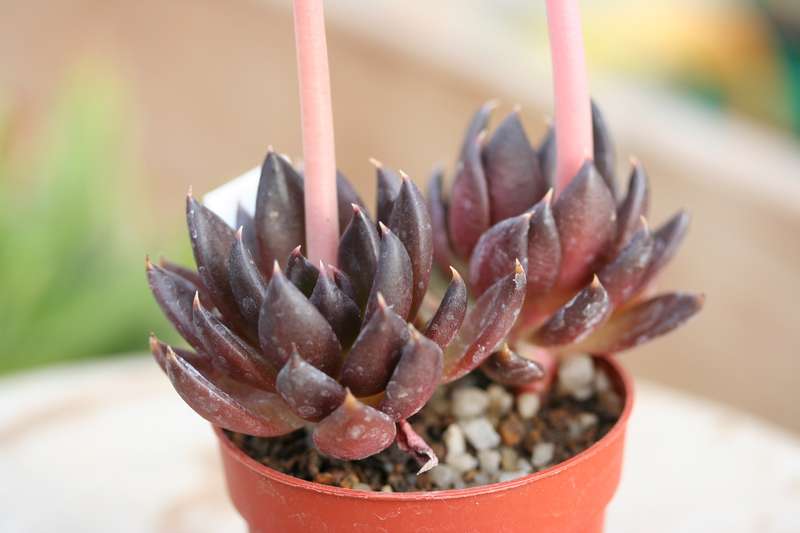
Echeveria affinis is a delightful succulent renowned for its contrasting hues and unique rosette shape. The leaves present a blend of green with vibrant coral tips, creating a stunning visual appeal. This Echeveria is often grouped with other colorful species to create contrast and interest in arrangements.
Echeveria affinis prefers bright, indirect light and well-draining soil. A consistent soak-and-dry watering method will keep this succulent happy. During its blooming season, care should be given to its lovely inflorescences featuring vibrant flowers. Its wonderful combination of color and form makes Echeveria affinis a popular choice for plant collectors.
Echeveria ‘Dondo’
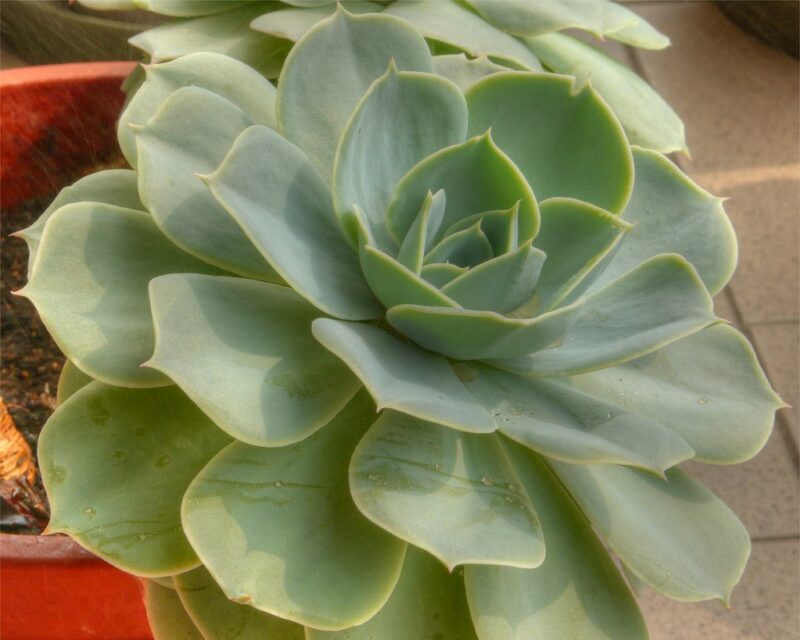
Echeveria ‘Dondo’ presents a unique charm with its round, plump leaves arranged in tight rosettes. The leaves are typically a pleasant shade of green, often taking on deeper hues when exposed to sufficient sunlight. This hybrid succulent is particularly appreciated for its compact appearance and rounded shape, making it ideal for smaller spaces.
Echeveria ‘Dondo’ thrives best in bright, indirect sunlight and requires a well-draining soil mix. Like other succulents, it benefits from the soak-and-dry method of watering, allowing the soil to dry thoroughly before rewatering. These beautiful plants often bloom during the summer months, producing lovely pink flowers that complement their compact appearance.
Echeveria Pulvinata

A visually interesting species, Echeveria pulvinata, also known as “Fuzzy Echeveria,” features a delightful layer of fine fuzz on its thick, soft leaves. The plant forms a dense rosette, making it a great focal point in floral arrangements and succulent displays. The light green color of the leaves, combined with their unique texture, make it an appealing choice.
Echeveria pulvinata requires bright, indirect sunlight and a well-draining soil mix to thrive. Its watering practices follow a similar pattern to other Echeveria, ensuring proper drying between watering sessions. During the blooming season, this species produces lovely red-orange flowers that rise above its dense foliage, offering a stunning complement to its unique visual allure.
Echeveria ‘Baron Bold’
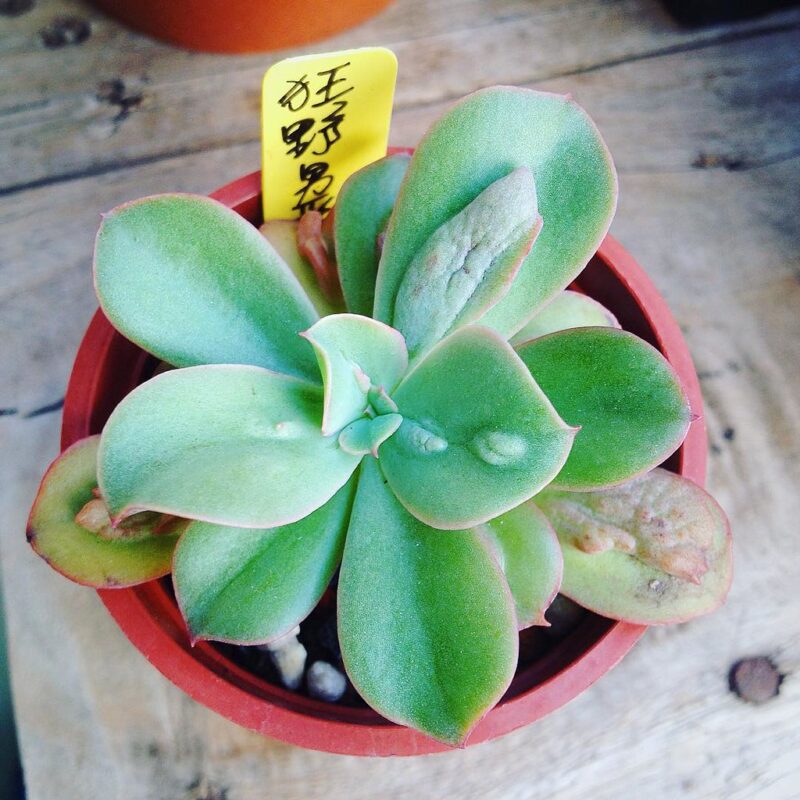
Echeveria ‘Baron Bold’ offers a stately presence with substantial, thick leaves that form a robust rosette structure. The leaves can exhibit beautiful shades of green, with subtle hints of blue, further enhancing their captivating aesthetic. The size and stature of this Echeveria make it an impressive center piece in any arrangement.
For optimal growth, Echeveria ‘Baron Bold’ prefers bright sunlight and well-draining soil. Traditional watering practices apply here—allowing the soil to dry completely before adding moisture. The flowering phase can bring forth vivid blooms, typically in coral or orange hues during the summer, drawing attention that perfectly complements the foliage.
Echeveria ‘Fun Queen’
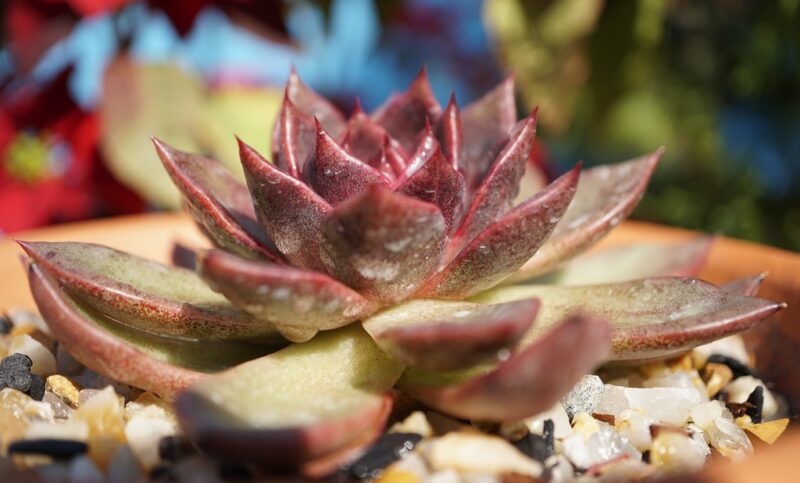
Echeveria ‘Fun Queen’ is a delightful cultivar that showcases a rosette formation adorned with plump, gleaming leaves that transition from pale green to hints of pink. Its cheerful appearance is sure to bring a smile to any succulent garden. This plant’s playful nature and distinctive foliage make it a favorite among succulent collectors.
This variety thrives in bright, indirect sunlight and requires a well-draining soil mix. Watering should follow a soak-and-dry approach to ensure its continued health. During the blooming period, Echeveria ‘Fun Queen’ can produce delightful inflorescences featuring soft pink flowers, enhancing its cheerful disposition.
Echeveria ‘Encantada’
Rounding out our exploration of Echeveria succulents is Echeveria ‘Encantada’, a delightful hybrid known for its soft pastel colors and beautiful rosette form. The leaves are typically a delicate green with blues and purples, creating an enchanting aesthetic that captivates plant lovers.
This specialized Echeveria thrives in bright, indirect light and requires well-draining soil to flourish. Regular watering practices should ensure the soil dries between sessions. When it blooms, Echeveria ‘Encantada’ produces lovely flowering stalks with pink to orange flowers that bring an added splash of color during the blooming season.


